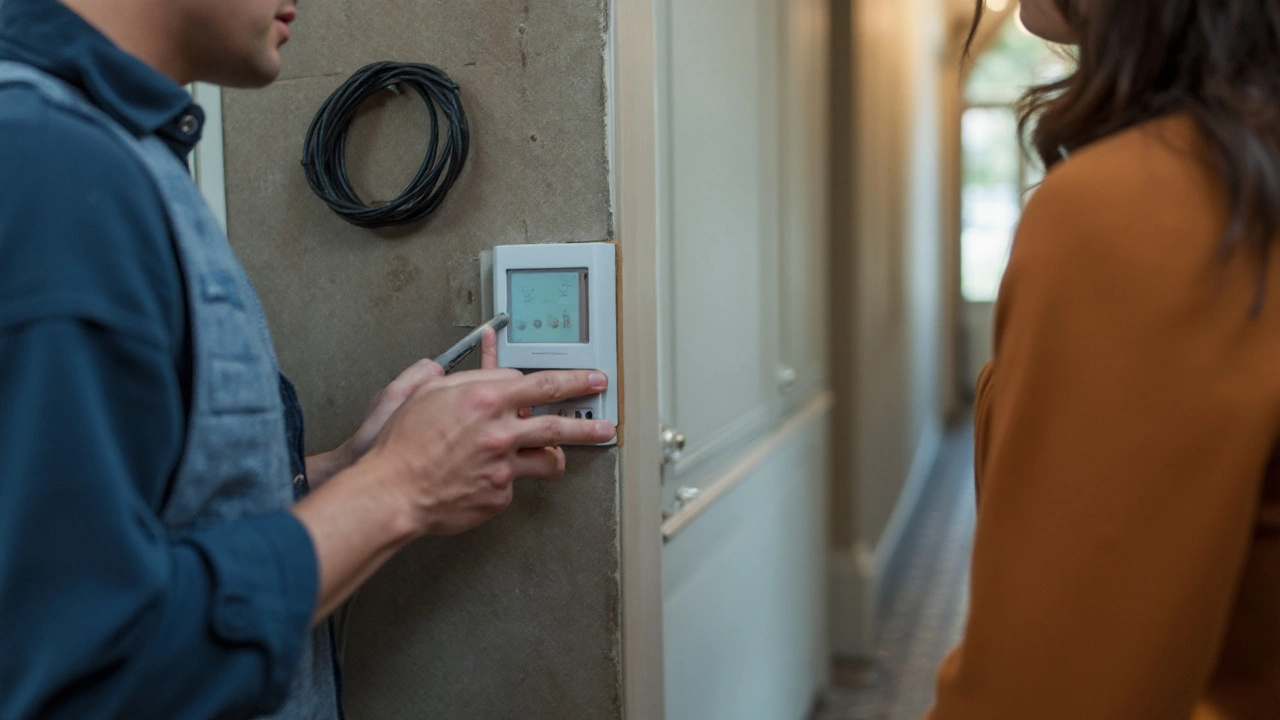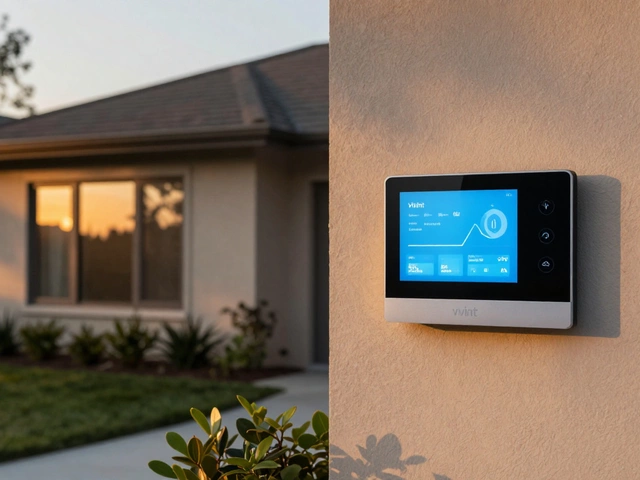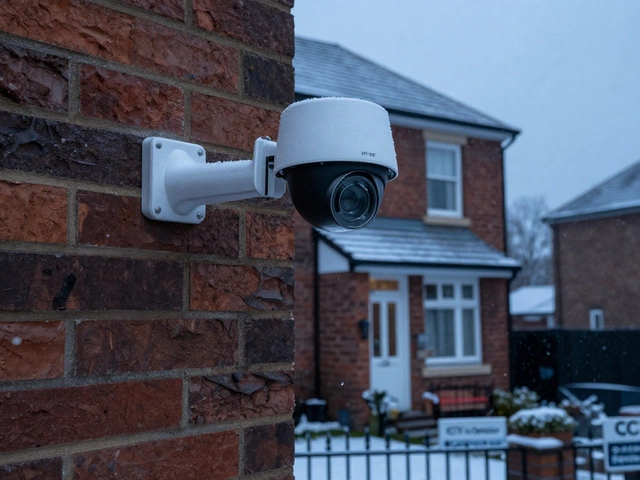Ever stood in your hallway, staring at the ancient phone socket and wondered if you’re stuck in the ‘90s just to keep your alarm system running? Loads of people still believe you need a phone line for your home alarm, but the world moved on while most of us were trying to remember WiFi passwords. Truth is, new security systems are built for wireless life. Whether you ditched your landline ages ago or never had one, you’re not left out in the cold when it comes to protecting your home.
How Traditional Alarms Used Phone Lines (and Why That Changed)
Home alarms started out with phone lines for a reason: it was the most reliable way to call for help. Back in the day, if someone tripped your burglar alarm, it would use your landline to ring the security company or police. Pretty clever, but also a bit fragile. Burglars learned a simple trick—just cut the outside phone cable, and the alarm couldn’t call anyone. That old vulnerability pushed the industry to look for better ways.
Fast-forward to now, and hardly anyone under 40 even has a landline. According to Ofcom, landline ownership in the UK dropped below 30% among people aged 30–44 in 2023. I can’t even remember the last time my daughter Orlaith saw an actual home telephone. Security companies adapted quick. They realised if they stuck to phone lines, their alarm sales would tank. So, the tech shifted. Now, you don’t need a landline, and you probably shouldn’t rely on one for security anyway.
Instead of phone lines, alarms can now use internet connections (either WiFi or Ethernet cables) or mobile data networks (like 4G and even 5G around Sheffield and most UK towns). New systems are packed with SIM cards—just like your smartphone. If the main WiFi fails (thanks to your teenager streaming half of Netflix), the alarm can switch to cellular backup. Bit like an Uber driver with three satnav apps: it always finds a way to get you help.
You might still find a few budget alarms that need phone lines. Some people keep them for nostalgia, or because their WiFi is dodgy in old stone houses. But it’s rare, and most security experts will gently nudge you away from these old setups, especially if you want peace of mind when you’re out.
Wireless Alarm Systems: How Do They Actually Work?
Here’s the magic: wireless alarm systems ditch the wires but keep the brains. Instead of running cables through your walls, panels and sensors talk to each other using encrypted radio signals or WiFi. It’s a game-changer for installation—nobody likes the idea of drilling holes and threading wires behind bookshelves. Most systems in the UK use narrowband radio frequencies that can’t be easily jammed, with backup batteries to ride out power cuts. The main control panel, sitting somewhere central (beside your kettle, if you’re like me), listens for signals from door contacts, motion sensors, or glass-break detectors dotted around the place.
The best part? When the alarm trips, it sends alerts—either through your home internet or via a built-in SIM card if the WiFi goes down. So even if someone literally yanks your router off the wall, the system can still send you push notifications, trigger sirens, or call your monitoring company. The only downtime is if you’ve let both your broadband and your mobile network die—pretty unlikely these days in most parts of Sheffield or Manchester.
In our house, with Maeve on night shifts and our little one always turning things off at the plug, I learned to never trust a single connection. The wireless alarm we use automatically checks in with its server every 30 seconds. If it loses contact, it tries the backup mobile network. Some systems even let you keep an eye on things with an app, so you’re not just hoping everything is fine—you can actually see it for yourself, CCTV style.
Cost-wise, you’ll pay a bit more up front than basic “phone line only” kits. But consider the hours saved not pulling cables through walls, or the freedom of not being tethered to outdated phone jacks. And don’t forget flexibility—moving house? Just unscrew the sensors and take them with you. You don’t even need to call a professional in most cases—DIY-friendly systems are everywhere now, and the average install takes about an hour. Just don’t ask me about the time I put a motion sensor upside-down. It took Orlaith five minutes to spot the mistake.

Pros, Cons, and Pitfalls of Alarm Systems Without Phone Lines
So, going wireless or SIM-only sounds pretty great. But it’s not all sunshine and rainbows. Let’s break down the perks and a few things to watch out for.
- Flexibility: No phone line means you can install the alarm almost anywhere. It’s good for garages, sheds, rental homes, even caravans.
- Easy Upgrades: Systems are often modular. Start with a couple of door sensors and add more when you want, maybe after you’ve saved enough to redo the bathroom instead.
- Remote Monitoring: Most wireless alarms play nicely with your phone. Get instant alerts, arm/disarm from anywhere, and peek at live camera feeds with a tap.
- No Mess: Seriously, nobody likes rewiring. And there’s a good chance your next house won’t have a phone line anyway.
But heads up—there are a few snags to think about:
- Cheap wireless kits might use weak signals. A thick Yorkshire stone wall can block them. Opt for alarms with signal boosters or “mesh” networks if your house is on the bigger side.
- Battery backups don’t last forever. Mark your calendar—most manufacturers recommend swapping out batteries every two years. If you forget, your alarm’s just an overpriced paperweight during a power cut.
- SIM-based systems work much better with a decent mobile signal. If you live somewhere rural (say, a peak district farm), double-check network coverage before you splash out.
Getting insurance discounts is another bonus. Many insurers now accept wireless alarms (even DIY ones), but some still want “Grade 2 or 3” accreditation. If that’s a factor, look for NSI or SSAIB-certified kits—“approved” by most UK insurance providers. That’s worth asking about before you put down cash.
For the tech geeks out there, some wireless alarms are now smart enough to pair with locks, lights, smart speakers, or even voice assistants like Alexa. Want your house to flash the hallway bulbs red if someone’s prowling after midnight? Sorted. But leave some tech budget for decent internet or a mobile plan—the system’s got to connect somehow.
Smart Choices: Picking and Installing an Alarm Without a Phone Line
Scrolling through pages of alarms on online shops gets overwhelming fast. You’ll see jargon like “GSM-enabled,” “IP-based,” “cloud control”—but here’s what really matters:
- Coverage: Do a quick tally. Doors, windows, and any weak spots—each needs its own sensor. For a three-bed terrace, you’ll want around six to eight sensors in total.
- App Compatibility: Does the alarm support your mobile (Android or iPhone)? Some cheap kits have app nightmares, missing updates, or no customer support.
- Monitoring: Will you self-monitor (phone alerts to you and Maeve), or pay a third-party monitoring company? Self-monitoring saves cash, but you need to pick up the phone if something’s brewing.
- Network Redundancy: Ask about dual connections (WiFi plus SIM card backup). Make sure the SIM is easy to top up or auto-renew.
- Battery Backup: How long can the system run if power is out? Top systems manage 24–72 hours; budget ones, sometimes less than a day.
To help compare differences, here’s a handy table based on current UK-available alarms, as of summer 2025:
| Alarm Type | Main Communication | Backup | Install Complexity | Typical Cost (GBP) |
|---|---|---|---|---|
| Traditional (Phone Line) | Landline | None or SMS dialler | Professional | £150–£600 |
| Wireless (WiFi only) | WiFi | None or basic battery | DIY or Pro | £120–£400 |
| Wireless (WiFi + SIM) | WiFi | Mobile SIM | DIY or Pro | £180–£650 |
| Smart Integrated | WiFi/Ethernet/SIM | All of above | DIY or Pro | £250–£850 |
If you’re the hands-on type, installation can be genuinely satisfying—like IKEA, but fewer mysterious parts. Read the reviews though. Some brands (think Yale, SimpliSafe, Ring) are reliable and pretty easy to deal with if you get stuck. Cheap off-brand systems might save you £30 but cost you hours in customer support limbo.
Double-check the fine print about subscription costs. Some alarms hook you on low upfront costs, but charge a monthly fee for remote access or alerts. It’s sneaky—compare exactly what’s included for free and what needs a plan. If you’re renting, check with your landlord: alarms are a plus, but you don’t want to upset anyone by leaving sensor marks all over the paintwork.
Last tip? Test your alarm with your family, housemates, or anyone who regularly pops by (grandparents, dog-walkers, etc). Walk through every door, open every window, try to set it off—with everyone’s phones ready to check if the alert pops up. It’s better to have a “false alarm party” than miss a real break-in because Orlaith found a creative new hiding spot for a sensor.
This tech is designed to be hassle-free, and it’s honestly liberating to not have to care about old phone wiring. Peace of mind doesn’t need a dial tone anymore—that’s a relief for anyone sick of hearing the landline ring at midnight for marketing calls anyway.






